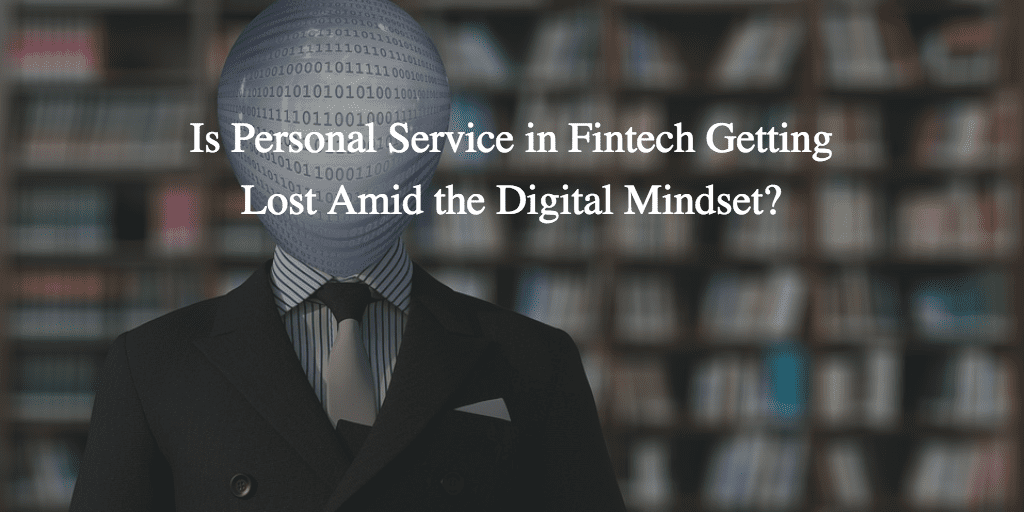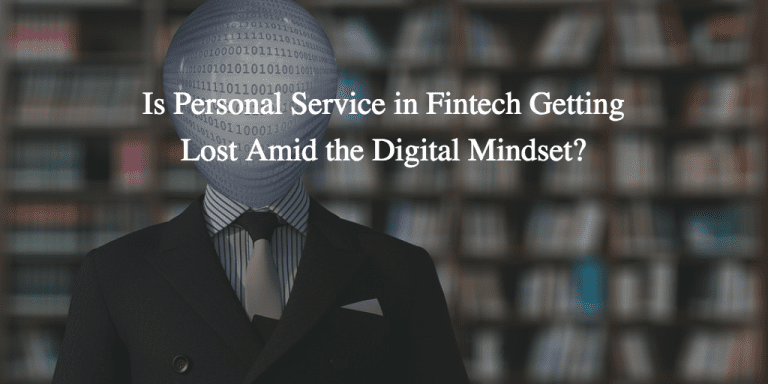
[Editor’s note: This is a guest post from Mark Lusky of Mark Lusky Communications, a writing and marketing communications firm, operating since 1982. He specializes in ghostwriting expert advice articles, blogposts and other bylined content for clients, along with writing e-books, whitepapers, case studies, websites, opinion pieces and other communiques—incorporating marketing skills and perspectives acquired as a regional marketing director for Ringling Bros. and Barnum & Bailey Circus. He will be attending LendIt in San Francisco this April.]
Amid up-and-coming fintech company trends toward cost-saving models that depend heavily on automated digital systems, the human touch is getting lost in the shuffle. In some cases, this doesn’t pose a problem. Many millennials and other younger groups prefer transacting business without any human intervention. Make it online, quick and done—and they’re happy.
If they have a problem, communicating via email, checking out forums, or consulting a canned knowledgebase are acceptable because they lack the need or desire for personal contact.
However, there’s a substantial segment of the consumers that not only wants, but demands, human service—particularly when it comes to customer support. Many people want to consult a live human being for help versus being relegated to digital resources.
If you feel that your borrowers are okay with the digital-only ways, so be it. But, how do you know? If you’re surveying existing customers, it’s likely that most of them are somewhat satisfied, or they wouldn’t be customers. How about prospects? What are their expectations? You may be leaving a huge amount of money on the table—without any easy way to discover or remedy it.
Conflicting Reports, Views Abound
It’s a big deal, in part because of often-conflicting reports. A Forbes article by Micah Solomon reports, “‘The way consumers communicate has changed dramatically over the past several years,’ Bob Segert, Executive Chairman of Aspect Software, which provides solutions to support customer contact, inside and outside of contact centers, tells me. ‘It has been a massive transformation, with customers now thinking ‘digital-first’ and showing a preference for human-less engagement.’…[but] people using chatbots do not want the experience to be in isolation – 86 percent of consumers expect to have the ability to transfer to a live agent should the interaction become too complicated.”
John Sawyer, seasoned brand strategist at Denver-based Anvil-Chinook, LLC, agrees live agent support becomes critical when the interaction gets complicated. “Automated response or customer service are great when everything’s working; the shopper experience is easy and brainless. But more often than not, there’s a tech glitch, which creates a negative experience. People get frustrated when ‘help’ is another machine or automated protocol. They want live, informed phone or chat.”
Sawyer emphasizes, “Brand-based relationships are (still) what’s king. If you’re not engaging your customers and creating experiences in mindful context of your brand, you’re catering first to the digital machine, not to the human being who has the relationship with you.”
On the Other Hand
Denver-based Neon Rain Interactive builds apps, software and websites for companies wanting to enhance their levels of automated service—both quantity and quality. Principal Arif Gangji notes, “The audience is split. Fintech companies live to lower costs for their customers by automating as many systems as possible. Software scales better than people. Fintech’s prevailing push in many cases is to design a platform that provides significant value, scales better, and is more profitable and cost-effective for the customer. This is done by software automation in place of human capital. Many consumers accept the trade off – better product with less service.”
He likens this to the choice between trading stocks online with no service versus using a brokerage service that charges fees and commissions. “Not everyone is willing to accept the trade-offs, and that line is usually drawn by generations,” he emphasizes.
Gangji nonetheless agrees with the idea advocated in the Forbes article that at a certain level and point, if the product or service is more complicated or not designed well, offer more live support. “Otherwise, it’s an opportunity for a competitor to swoop in,” he points out.
Voice, Chat And Bots…Oh My!
Complicating the situation are the blurring lines between live voice support, live chat, and chatbots.
Notes an Inc. Magazine article last spring about live chat, “Every business thrives off the positive relationships it creates with its consumers…loyal ones, all the way to the prospective window-shoppers who are still on the fence about purchasing. And a huge part of that discussion on how to both retain previous customers and attract new ones comes down to personalization. This is where a live chat function in your website can be extremely helpful, since obviously a large portion of consumers have questions…Long term, however, many companies are looking to automate this process, since many consumers end up asking similar questions. As chatbots become more and more intuitive, this level of engagement won’t be an ask on the consumer’s part–it will become standard…”
An Adweek article addresses the chatbot challenge: “As chatbots become more and more sophisticated, brands are increasingly relying on them as an easy (and inexpensive) way to provide customer assistance. Likewise, plenty of consumers are happy to skip the help line and get straight to the answer…‘but consumers still prefer talking to a live person when customer service complexity comes calling,’ said Tim Dryer, senior director of public and analyst relations at Aspect Software…”
So, What To Do?
Profitability of digital-only businesses can be astounding because the model is so cost-efficient. Some just don’t want customers with “high maintenance” needs such as human customer support.
The best overall answer is to offer all options. Enable customers to interact solely in a digital way or with live support to guide through the process, answer questions and solve problems. Make it easy to use both, such as Amazon does. Online ordering is usually a breeze. But when a problem or concern arises, they have caring and competent live human beings to help.
To some companies, offering live support seems costly and incongruent with highly efficient financial models. There is sometimes a tendency to make people pay per instance of live support, or make purchasing a more costly product or service option as a condition of free support. While this will bring extra dollars in the door and serve as an upselling tool, it also likely will alienate many prospects and customers—who will respond by taking their business elsewhere.
If possible, make live support free—at least up to a certain service threshold. And make it possible to find without having to navigate the maze to the point of exhaustion and extreme frustration.
Ways To Show That You’re Invested (Or Want To Be) In Human Caring
- Check in with your world. Conduct a campaign (perhaps a crowdsharing effort) to find out what prospects as well as present customers want in the way of live and automated processes and support. This can range from targeted one-on-one outreach and focus groups to creating and sharing articles, blogposts, website excerpts et al with a larger audience.Also, canvass prospects on your website before they get to “no.” Very early on in any digital process, ask how they want to communicate and what types of support they expect. This can tell you volumes about what your prospects prefer, and serve as a great guide for deciding if/how to change.
- Beat your “human caring” drum. Use a well thought-out and implemented human caring strategy as its own marketing tool. Make the issue front and center in blogposts, expert advice articles, case studies, whitepapers and e-books; on your website; through social media and reviews. Then, make sure you’re following through on your commitments. (There’s nothing worse than seeing lofty claims unsupported by user experiences, reviews and reports.)
- Extend human touch company-wide. Besides direct human voice (and sometimes chat) resources, reference your humanity and personal touches—and build trust—through such efforts as showcasing happy employees. Use a happy workforce as a powerful marketing tool demonstrating your investment in people. Share the word via blogposts, social media articles/posts, published expert advice articles, website references, et al. Happy employees do a better job and take better of care of customer business, whether they’re on the front lines or behind the scenes. The clear takeaway for consumers is that your company will take good care of their needs—and therefore is trustworthy.
A recent American Banker article addressing the best fintechs to work for is a great example. The article notes, “If the popularized idea about technology startups is to be believed, their workplaces are more like playgrounds than offices…There are fresh food deliveries, well-stocked cafeterias and even wine and beer kegerators — but all with a purpose…Even more established companies on this year’s Best Fintechs list go beyond the basics in trying to make sure employees are happy enough to stay.”
The article highlights such companies as Computer Services Inc., Promontory Interfinancial Network, Kasasa, Marlette Funding, Mortgage Capital Trading, NvoicePay, nCino, SmartbizLoans, Cross River Bank, Nav, PeerStreet and Finicity for their generous, non-traditional ways of supporting and rewarding their workforces.


